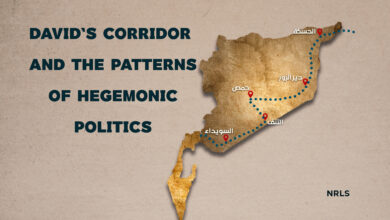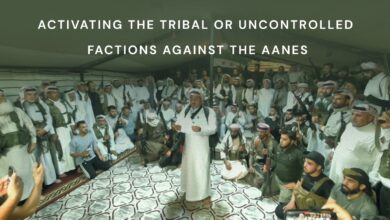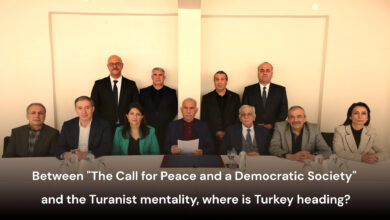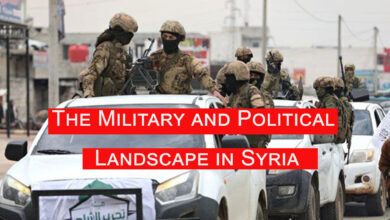
Contemporary global and regional conflicts have reached disturbing levels, resulting in the waste of both human and natural resources. These confrontations, especially direct military engagements, are devastating in terms of infrastructure damage and psychological trauma. Importantly, the destructive consequences are shared by all parties involved.
These conflicts, however, are not new. Human history is rooted in struggle, and such confrontations may persist as long as life itself continues. Today, the Middle East remains the epicenter of many of these global disputes, just as it has been throughout history. This is not surprising, given the region’s historical, religious, and civilizational significance—it is the cradle of humanity and the birthplace of the world’s major monotheistic religions.
But a critical question remains: Are these conflicts an inevitable part of human nature and historical evolution, or can they be controlled, deescalated, and effectively managed?
The Israeli–Palestinian Conflict: A Core Regional Issue
The Israeli–Palestinian conflict is perhaps the most significant and persistent regional and international conflict of the past century. Its complexity arises from its intertwining layers of religion, ideology, nationalism, and geopolitics. It is a religious conflict between Judaism and Islam, a political and ideological one between Arab nationalism and Western influence, and a deeply emotional and historical dispute.
Despite the presence of over 30 non-Arab Muslim-majority countries with substantial political and economic influence, the Arab world has often seen itself as the torchbearer of the Islamic cause. Ironically, in the unfolding of the conflict, Arab nations have been consistent losers—not in terms of religion, but in their collective political posture. Many Muslim-majority countries maintain diplomatic and economic relations with Israel as a recognized state, underscoring a divergence between religious solidarity and geopolitical pragmatism.
This trend was recognized early by some liberal Arab states. Egypt led the way in normalizing relations with Israel, followed by Jordan, and more recently, several Gulf states under the Abraham Accords. Some did so openly; others chose a quieter path, awaiting the right geopolitical moment.
Throughout the past century—from the First Zionist Congress in Basel in 1897, to the 1917 Balfour Declaration, to the 1948 declaration of the Israeli state, the wars of 1967 and 1973, the 2002 Arab Peace Initiative, and beyond—the Arab world has continually struggled to present a united, strategic front. The division, coupled with military and political weakness, has contributed to their strategic losses.
Major Global and Regional Projects in the Middle East
Today’s Middle East is shaped by a clash of grand global and regional visions. These projects aim to expand influence, establish economic dependencies, and reshape alliances.
Global Projects:
- The Belt and Road Initiative (BRI): China’s ambitious infrastructure and trade network project aimed at connecting Asia, Africa, and Europe.
- The Indian Spice Route: Backed by the United States and its allies, this initiative serves as a counterbalance to China’s BRI.
- The North-South Corridor: Spearheaded by Russia, it seeks to connect Russian territories with South and Central Asia and the Middle East.
Regional Projects:
- The Shiite Crescent Championed by Iran: This project aims to revive Persian influence through the spread of Shiite Islam, leveraging allies such as Hezbollah, the Houthis in Yemen, and Shiite militias in Iraq. Strategic infrastructure like Iran’s transnational railway project was designed to link Tehran to Beirut through Iraq and Syria. However, growing Western resistance—particularly against Iran’s nuclear ambitions—has stalled the initiative. Signals include reduced support to proxies like the Houthis and shifting statements from leaders of the Iraqi Popular Mobilization Forces.
- The Mīthāq Millī Doctrine (National Pact): Rooted in Turkish nationalism and neo-Ottoman aspirations, Turkey envisions itself as the heir to the Ottoman Caliphate. President Erdoğan’s government seeks to revive influence over historically significant cities like Aleppo and Mosul and link the Gulf through strategic trade corridors like the Development Road project. This vision is supported materially and politically by Qatar, with ambitions to assert Sunni leadership in competition with Saudi Arabia and Egypt.
- The David Corridor: Israel continues its territorial and diplomatic expansion through military means and strategic agreements. Its fundamental goal remains national security, albeit with flexible definitions. The Abraham Accords and participation in regional economic corridors signal Israel’s intent to cement its position, while international backing—especially from the U.S.—ensures leverage against adversaries.
Syria between Arab Embrace and Regional Realignment
Following the fall of the Assad regime on December 8, 2024—mirroring Iraq’s Ba’athist collapse two decades earlier—Syrians expressed hope for political change, refugee returns, and national reconstruction. However, Turkey’s deep administrative interference and its intelligence agency’s active involvement raised Israeli suspicions about hidden regional realignments that could threaten its security.
Israel’s response was swift and forceful. Believing it had erred by allowing Iranian dominance in post-Saddam Iraq, it was determined not to repeat the mistake with Turkey in Syria. Israel launched a broad campaign targeting remaining Syrian military infrastructure, coupled with a ground incursion into Mount Hermon—sending a clear message that it would not tolerate another regional rival establishing a foothold.
Internally, the rise of radical Islamist factions to power has further complicated Syria’s political landscape. Groups like Hay’at Tahrir al-Sham, and later the “Joint Operations Administration,” have filled the vacuum left by the weakened secular and Muslim Brotherhood-linked opposition. Backed by Western elements—particularly the UK—these factions are viewed as the least-worst alternative amid the ongoing exclusion of the Kurdish-led Syrian Democratic Forces (SDF), which remain politically sensitive due to Turkish opposition.
Turkey’s aggressive maneuvers in northern Syria have provoked backlash from other regional stakeholders, particularly Israel. The recent wave of Israeli strikes on Syrian strategic sites reflects this growing confrontation between rival regional visions.
Despite a flurry of diplomatic activity by Syria’s new leadership, Western powers remain cautious. Sanctions remain in place, and recent donor conferences have frozen humanitarian aid—estimated at €2.5 billion—pending clarity on Syria’s political direction.
The message is unambiguous: Syria must choose a path—either reintegrate into the Arab fold or commit to Turkey’s orbit. The coming months will determine not only Syria’s fate but also the broader regional balance in a Middle East still defined by clashing powers and unfinished revolutions.




